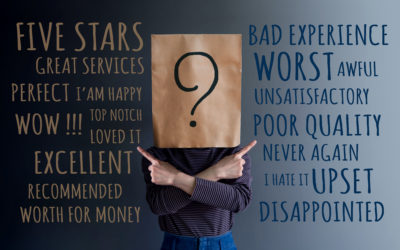The agency of record model is shifting to using smaller and mid-sized specialty agencies. The benefits include more specialized knowledge, increased value, more creativity, and better market knowledge. Is it time to fire your agency of record?
The Agency of Record (AOR). It’s been the driver of agency revenue since before David Ogilvy decided to hang out a shingle. But that model is changing. The 2019 AdAge Agency Report declared, “U.S. agencies had the weakest growth since the ad market emerged from the recession.”
It’s no longer just a TV and print world, and for those who wish the “Mad Men” model was still en vogue, it seems that clients are way smarter these days. As for the customer’s most brands want to engage with, they’re untethered, digitally savvy, incredibly demanding, and in control of their experiences. It’s a whole new ball game.
No more interruptive promotions, because they’re not listening. They want to be engaged on a one-to-one basis, not via some hokey mass media blast because last I checked, not everyone likes vanilla ice cream.
The Agency of Record
The “agency of record” approach is how advertising agencies sought to bundle the services most brands were buying; TV, radio, print, outdoor, and after some time, “digital” work. Chief Marketing Officers liked the idea for several reasons, not the least of which was the illusion of having “one throat to choke.” This model found its way into the IT space, too. Think Sun-Oracle-Veritas and SAP-Accenture.
That concept might have made sense when there were only a few channels, and advertising was mostly interruptive. Today, your target audience is a multi-segment, untethered, highly demanding, incredibly savvy bunch, and they won’t submit to having their experiences hijacked, least of all for an advertisement or content that’s not timely, relevant, and personal.
Besides, buying expensive “agency of record” services to get a sense of security (“Remember, Johnson – no one ever got fired for hiring IBM!”) makes about as much sense as buying expensive monolithic, best-of-breed marketing technology platforms.
“If you’re wedded to one vendor, they have the opportunity to hold you hostage regardless of what kind of value they’re delivering. You might have one throat and you might be choking it, but you’re still stuck with it. Plus, you can only choke so hard, or they’re dead and you’re screwed.” – Customer Relations, And The Faults With ‘One Throat To Choke’ Business Alliances, Forbes 2013
As with elaborate and complex best-of-breed marketing technology platforms, when you go the agency of record route, you often end up using only 10-15% of what you’re paying for, and what you pay is top dollar. The reality in too many cases is that you come away from those experiences feeling like Clara Peller in those classic Wendy’s “Where’s the Beef?” commercials.
Models for Success Beyond the Agency of Record
Companies like P&G get it. They’ve stripped out $1 billion in agency costs to date with a focus on bringing more of the work in-house. Chief Brand Officer Marc Pritchard is moving P&G from “brand people who outsource too much of their work, to brand entrepreneurs with their hands on the keyboard.” P&G has reportedly halved the number of agencies it works with, from 6,000 to 3,000.
P&G is not alone. For example, one year after launch, Unilever’s in-house agency U-Studio has a presence in over 20 countries. According to an article in the drum, “The agency was established to develop “utility and informational digital content” such as how-to videos, infographics, articles, product information, while Unilever simultaneously slashed some 3,000 agencies it worked with in half.”
Unilever Chief Marketing and Communications Officer Keith Weed says of U-Studio, “Since launching in 2016, we now have 18 U-Studios across 15 countries. They sit with our marketers and are regarded as centres of excellence. Our marketers like the new way of working and it has delivered on the anticipated benefits of speed, quality, cost and agility.” Weed says that by in-housing, the company created the tech, tools, and talent required by marketers to better serve and anticipate the needs of Unilever consumers.
New Ways of Working
This move away from the agency of record mindset fosters new ways of working and advances an entrepreneurial culture in the right environment. Besides, any CMO with a smartphone knows we’re living in a demand economy.
We want what we want, and we want it fast, simple, with kick-ass customer experience. How many of you now get your groceries delivered to your home? What about prepared food from your favorite restaurants? Have you hailed an Uber lately?
Beyond an Uber ride, have you tried Uber Eats, Uber Freight, Uber Health, Uber for Business, Uber Bike, or Uber Elevate? Probably not. These offerings have been crafted for specific audiences. Sure, Uber would welcome the “Uber of Record” customer, but the likelihood of me consuming multiple services from Uber beyond a ride and maybe food delivery is slim.
Apologies for the digression. Let me get back to my point.
Specialty Shops: Specialized Knowledge, Increased Value
It’s clear from the shift that’s been happening for more than ten years that the agency of record model is shifting to using smaller and mid-sized specialty agencies. According to a CMO Club study, CMOs report this approach provides them with more specialized knowledge, increased value, more creativity, and better market knowledge. The same survey found that some 46% of CMOs surveyed were “…still using the traditional agency of record model, but only 14% reported being very satisfied.“
“Listen closely and you may just hear the ghost of David Ogilvy, the father of advertising, rattling his chains as the halcyon days of big agency dominance continues its decade-long decline while the pervasiveness of digital marketing, and the emergence of smaller specialty shops, twist the knife into the time-honored Agency of Record (AOR) model.” – Developing a Modern Agency Ecosystem, CMO Club
Putting all of your eggs in one basket, whether you’re buying a marketing technology tool or trying to drive your business forward through marketing and advertising, is a throwback to a bygone era. Your customers are moving faster than your brand, and you can’t possibly create and deliver the remarkable customer experiences they expect if you’re always struggling to keep up.
Like narrowcasting, where you deliver the right message to the right customer at the right time, moving away from the agency of record or “all-in-one” model means choosing specific partners to help you address specific challenges or goals you want to achieve.
If the Only Tool You Have Is a Hammer
As Abraham Maslow said back in the 60s, “I suppose it is tempting, if the only tool you have is a hammer, to treat everything as if it were a nail.” Don’t do that. Pick and choose the right tool for the job — every time. Not only will those tools likely do a better job helping you accomplish your tasks, but you’ll also be better equipped to take on new initiatives (can you say “innovation?”) with the robust toolkit you’ve built over time.
Make sure you give whatever partners with whom you engage the time to develop a deep understanding of your business, including where you’ve been, where you are today, and where you’d like to go tomorrow. Any solutions must also carefully consider your business, marketing, and technology needs.
One more thing – don’t be sucked into the lipstick on a pig approach of bolting on the word “Digital” to “Agency of Record.” You’re smarter than that. As the Adweek article says, “It’s Time to Fire Your Agency of Record” and switch over to a team of specialists instead. Do it. And don’t look back.
Is your brand engaged in an agency of record relationship? How’s that working out? Please join the conversation by leaving a comment.
Delivering on the Promise of Personalization
The road to personalization success as promoted by marketing technology vendors, analysts, and others - all ostensibly with a dog in the race - is usually paved with rough, long, expensive toll roads. Here's what you need to know to deliver on the promise...
How to Create Digital and Customer Experience Success
Creating digital and customer experience success requires more thinking and planning, not more expensive marketing technology. Here’s what you need to know.
What is a Digital Strategist?
The marketing industry has been confused about the role of the digital strategist since the dawn of digital marketing itself. Here’s my take on the answer to the question, “What is a digital strategist, and what does a digital strategist do?”




0 Comments